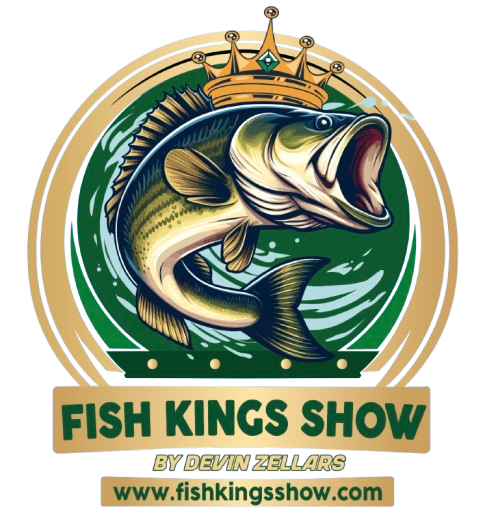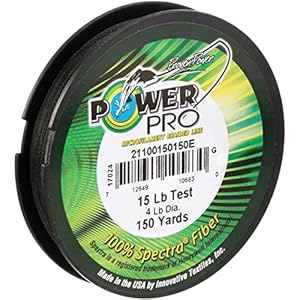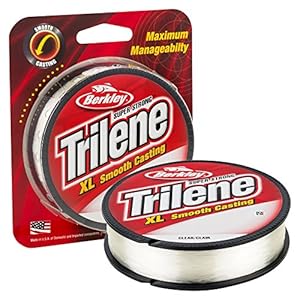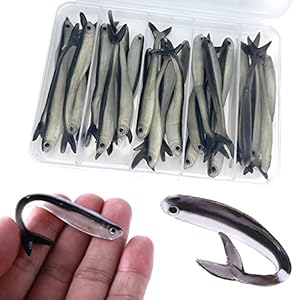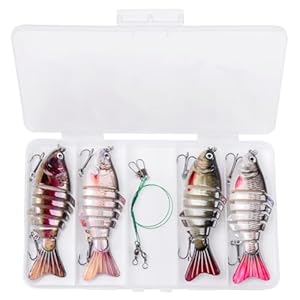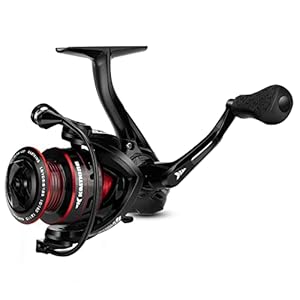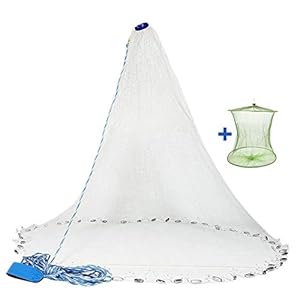
If you fly fish long enough, you’re bound to experience a breath-stealing moment now and then. Years ago, not long after I moved to Idaho, I remember my first such moment spent with a fly rod in hand. I’d hiked into a little creek not too far from the Wyoming border on a spectacular June afternoon, and, from the trail that led up the creek, I spied perhaps the sexiest little stretch of stream I’d ever seen. The creek meandered through a willow-choked meadow and, as it rounded a deep, undercut bank, it tailed out over a pool of deep, green water.
At the time, my years of fly fishing experience were relegated to chasing trout in the high-country waters of Colorado. Idaho, while similar, was not quite as severe as the rock-and-ice, high-elevation trout streams of the Centennial State that, while farther south, were also a few thousand feet higher. But, even at that elevation, productive trout water wasn’t too tough to find. Over time, I realized, good habitat just looks like good habitat, particularly when it comes to trout. And, standing on the trail above this gorgeous little tailout in the fading light of the day, I knew this little stretch of this little Idaho creek was, indeed, good water.
I bushwhacked my way from the trail down a stretch of loose scree, using the odd willow branches that poked up through the loose rocks for lifelines, and positioned myself below the tailout on what I was certain was the stretch of water to fish on this otherwise unassuming stream — there are dozens like it in the Caribou Highlands, and, over time, I’d do my best to fish them all. I took my time, tied on a size 12 Stimulator and greased it with fly floatant. I made two or three false casts and flung the fly to the head of the tail out. It landed lightly, spun around a little whirlpool and, miraculously, floated drag-free beneath an overhang on the far bank.
From my vantage point, I watched as perhaps the biggest native cutthroat trout I’d ever seen rose to inspect the fly. In the slightly dusty water (runoff was almost over here along the border of the two states), I watched as the Stimmy floated on the ideal line, and the fish, clearly a migrant from the lake at the bottom of the drainage, gave it every serious consideration. I held my breath. My muscles tensed. This was the moment when I would finally hook and land a legit cutthroat that, by anybody’s internal tape measure, would qualify as a beast.
But it wasn’t meant to be. The cutthroat, its visible, bright-red slash under its gills on full display, chose not to eat the Stimulator. Not on that first cast. Not on the second cast. And, after a fly change to something a bit more “natural,” it didn’t even rise to a Green Drake. It just wasn’t meant to be.
Such is the nature of trout fishing. The constant effort to fool big trout by floating dry flies over their faces eventually pays dividends, but sometimes, they look but they don’t eat. It just is what it is.
And then, there’s pike fishing.
Nothing delicate about it
Yes, I’ve buried the lede. But in these days of nebulous journalistic ethics where clicks rule the day and the hard-and-fast rules that governed the craft “back in the day” have succumbed to the tawdry promotions of the latest “wardrobe malfunction” at the Grammys, the build-up has a purpose. And, for any fly fisher — particularly a trout angler — who remains stuck in the “upstream and dry” discipline, this little nugget is for you.
Because, for every trout that “takes your breath away,” I offer you a visual tincture that will both salve and infuriate, satisfy and irritate. For you, dear trout purist, I offer you the fly-fishing craft’s virtual Crossroads, where, if you choose, you can make that dreaded “Deal with the Devil.” I understand if your puritan upbringing forbids from you from straying from the flock — from venturing from the perfect drift and experimenting with the false prophet that might come in the form of a hastily tied Gurgler flung deep into a patch of boreal lily pads and pulled with purpose back toward the boat. There’s nothing elegant about it. Nobody is going to write appreciative literature describing this fishing that might one day be offered up as a romantic screenplay that changes fly fishing forever.
Nevertheless, this is where your breath gets taken again.
It won’t be stolen by a purposeful rise to the perfectly cast dry fly, or a glorious gulp in some storied, high-society chalk stream about which William Butler Yeats might have waxed poetic. No sir. This is the metal and grunge of fly fishing. This is the erotica that Yeats never wrote (but unabashedly admired). For, when a northern pike the size of a cocker spaniel surges from the depths and absolutely destroys a popper skittering across the otherwise calm surface of the lake, there’s nothing poetic about it. Fly fishing for trout, when done at its pristine best, is orchestral. Classical. Fly fishing for pike? This is where the black-draped metal artist bites the heads off of bats.
There’s no delicate language to describe a pike attack. More likely, a stream of involuntary profanity will gush forth. This is totally appropriate, because no matter how well you prepare for it, it almost always comes as a surprise. But one thing remains consistent. Sometimes they hit and sometimes they miss. And when a really big northern misses, it doesn’t always come back for a second look. Just as in trout fishing, sometimes, it’s just not meant to be.
Not a bad view (photo: Earl Harper).
Way up north
While northern pike have, with the help of well-meaning fisheries managers and nefarious bucket biologists, squirmed their way into Lower 48 fisheries from coast to coast, the absolute best place to find them and fish for them is from a remote fishing lodge tucked into a cove on some hidden boreal lake. Northwoods lodges are the stuff of fishing legends, and while the writings on pike are likely to come across as somewhat guttural, wonderful prose has been spun about these far-flung fishing hideaways sheltered by knobby black spruce trees and the granite bedrock of the Canadian Shield.
It was this past summer that we found ourselves on such a hidden lake, only having been dropped off in a quiet cove thanks to the talents of a proper bush pilot and his even more proper DeHavilland Beaver. The ride that morning from Gangler’s North Seal River Lodge was just less than half an hour, but, as we watched the Beaver slide off into the subarctic ether, we knew we might as well be a million miles away from anything. We had this spacious boreal lake all to ourselves, and for the next eight hours or so, we were going to chase big, primal, predatory, northern pike.
Our guide, a First Nations Cree named Tintin, guided us across the choppy, crystal clear lake to a hidden little cove. There, tucked into the corner of that little cove, a small creek maybe six feet wide flows quietly into the lake. Tintin steered the boat into the mouth of that creek, where we slid to a stop as the boat nicked the bottom.
“We’re gonna walk the boat through,” he said. I looked ahead and upstream of the little creek and realized that “through” meant up the little creek about 50 yards, where another, smaller lake opened up beyond. In other words, “Get out of the boat and push, fellas.”
And that we did. It took all of five minutes to meander the length of the little channel, and then, just as if the fates had it all planned out, we found ourselves on a sheltered-from-the-wind pike pond lined with willows and perfectly outfitted with a handful of grass beds and pocked with flowering lily pads. Any knowing pike angler would have been twitching in anticipation. It looked perfect.
Within just a few casts, we realized that it very well might have been. Dancing Gurglers over the grass and lily pads drew small and medium-sized pike to the top, and the takes were dazzling. Often, the 30-inch fish would rocket from the water and dive down upon the stripped foam flies, creating splashy moments of sheer exhilaration. But, after a few minutes of catching a handful of middling pike, Tintin told us to reel up.
“The big ones aren’t here,” he said. “But I think I know where they are.”

Photo: Chris Hunt.
The chance
He put the boat’s quiet little outboard in gear, and we nosed into the heart of this little no-name pond in the middle of the northern Manitoba’s wilderness, slowly cruising past likely holding water until we arrived in a tight corner where willows hung low over the water, and aquatic grass waved in the pond’s subtle current. The water was just clear enough to warrant a few feet of visibility, but just dirty enough to keep us from seeing any pike that might have been laid up under the overhang.
“Don’t use a popper here,” Tintin said quietly. “It needs to be just under the surface.” So I dug through my fly box and came away with a massive fly, likely tied by some faithful musky addict who loves to cast giant, unwieldy flies at tight-lipped fish, and held it up. It looked like a combination of a dead snowshoe hare and the guts of a trailer park couch after a pit bull attack.
“Perfect,” Tintin uttered. I shook my head. Once this thing gets wet, I thought, it’s going to be like trying to cast a dirty diaper.
The craft-fur-and-goggly-eyed monstrosity whistled overhead as I sent it to the bank. Fluffy and largely disorganized, it landed lightly under a drape of tight willows about six inches from the bank. And there, it sat, soaking up the pond.
“Strip,” Tintin said quietly. And then, for emphasis, he added, “Fast.”
I did as I was told and immediately tightened up the slack and made one long, fast pull on the fly line. The fly, once a disorganized mess of random materials, snapped into order, and I could see what the guy behind the vise must see all the time — the perfect, fishy pattern, goggly eyes and all.
Chaos
Chaos is a real thing, and if you operate under pressure at regular clips, it’s probably something you embrace. If you thrive amid a mishmash of moving parts, distractions, voices talking over other voices, and the like, chaos is just a part of your daily routine.
If, however, the vast majority of your days begin with a piping hot cup of coffee, and your biggest immediate challenge is desperately trying not to spill it as you wander downstairs to your grotto of an office, the chaos comes in a different form. Maybe the fly-tying bench is a bit out of order after a whiskey-soaked night of tying streamers. Or perhaps yesterday’s coffee cup sits empty next to the keyboard, abandoned after serving its lone, meaningful purpose. Or maybe it’s June and the calendar thumb-tacked to the wall still reads March. That’s the chaos in my life.
So when the idyllic little pike pond opened up under that dastardly diaper fly and the biggest northern pike I’d ever seen erupted from the water and seemingly surfed across the surface, creating an appreciable wake and an even more appreciable, “Oh, my God!” from all three of us on the boat, I did, indeed, lose my breath.
And, for a split instant, the line came tight and I could feel the weight of this beast, this dark-water kraken of the north … and it was heavy. Then, as you might already suspect, it was gone.
“I think she missed it,” Tintin said, correctly assuming that the massive pike that came after that fly was a female — most really big pike are. There I stood atop the bow of the boat, line limp and flaccid in the lake at my feet. I could have been dejected. I could have been heartbroken. I could have, in a fit of absolute frustration that all fly fishers experience at one time or another, snapped my fly rod over my knee and battled back the urge to shove the sharp end into my neck and just end it all.
Instead, I looked at Tintin, and simply said, “That was amazing.”
Go north, dear angler. Go north
If pike aren’t a fish you’ve considered, and you’ve heard all the pablum about how they don’t fight well, or they’re just not challenging enough, or that the really big ones just go to the bottom, that’s fine. If that’s the case, and you’ve come this far, I sincerely apologize for wasting your time. But if the Northwoods experience has always tickled your psyche, and maybe you’ve tasted that incomparable take from a feisty, mislocated pike somewhere in the States, you might be ready to head north to the lake-scarred, black spruce wilderness that stretches from one end of Canada to the other.
You might be ready to find yourself on a remote, boreal lake where, at the mercy and timing of a float plane pilot and a First Nations guide, you’ll greedily experience the drama and the chaos of fly fishing for pike. Then you can form your own opinions of pike and see for yourself how they’ll contort to take a fly and how no eat is a subtle eat. Here, amid the calls from loons and among the footprints of wolves and black bears and moose the size of Ford Rangers, you might find just the right amount of chaos to steal your breath and, at the same time, open your eyes.
There’s fly fishing. And then there’s fly fishing for pike.

The sun sets on the boreal north (photo: Earl Harper).
IF YOU GO
Getting there
Any trip to a Northwoods lodge in the wilds of the boreal north, from the Yukon east to Labrador, is likely going to require some effort and planning. Be prepared to book a flight to a major southern Canada hub. From Vancouver to Winnipeg and from Saskatoon to Toronto most trips north start in one of these airports. Once there, most lodges offer reserved charter service for you and your fellow guests as you head north into the wild.
When to go
This is a hung jury, in my experience. I’ve had lights-out weeks starting just after ice-out in late May, and I’ve done very well as summer turns to fall up north in late August and early September. Truth be told, there is no bad time to go for pike. In the heat of the summer they will be deeper, which means you’ll need to go deeper, too (and by deep, I mean six to 10 feet — a perfectly reasonable depth for a sink-tip fly line). Early in the year, and again late, they’ll be in the shallows, cruising weed beds, grass flats and shallow, rocky coves. These are the best times to catch pike on top.
Choosing an outfitter
Anglers will have lots of options, but I’d be hard-pressed to suggest a trip where the fishing menu begins and ends with northern pike than a trip to Gangler’s North Seal River Lodge in northern Manitoba. Owner Ken Gangler, an avid fly fisher himself, runs a tight ship of guides and boats, and with three float planes, guests can easily book fly-outs from the lodge to little-visited pothole lakes within an hour’s flight time. And the “big lake” where the lodge sits on its southern shores is exactly that. Egenolf Lake is massive, which gives guides and clients lots of room to spread out. One of many trophy-quality lakes in the North Seal River system, its waters, over time, eventually drain into Hudson Bay. But here, in far northern Manitoba, its waters are fresh and clean, and loaded with northern pike, Arctic graying, walleye, lake trout, and lake whitefish. Gangler’s makes getting there easy, too — every package starts in Winnipeg, an easy flight from most points in the Lower 48. From there, you’ll spend the night and hop a charter flight north, first to Thompson, Manitoba, for refueling, and then on to the lodge and its private airstrip.
Trending Products
